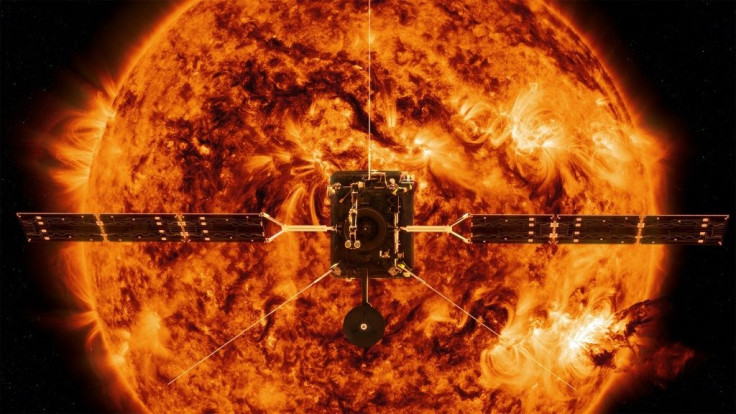LOOK: Stunning Views Of Solar Outbursts Captured By The Solar Orbiter
KEY POINTS
- Three Solar Orbiter instruments captured a pair of coronal mass ejections in February
- It was the first CME detection for the SoloHI instrument
- Space agencies shared stunning views of the event
The Solar Orbiter is not even on its main science mission yet but it's already capturing incredible data. Its three instruments recently captured stunning views of coronal mass ejections (CME).
NASA and the European Space Agency (ESA) are still in their cruise phase and will only begin their main science phase in November. Last February, the spacecraft reached half the distance between the sun and the Earth, making it an excellent opportunity to check instruments or perform specific observations in preparation for the main science phase of the mission, the ESA explained in a news release.
At the time, the Solar Orbiter was essentially "behind" the sun from the Earth's perspective, according to NASA. Although the mission had already been planned, the team behind one of the spacecraft's instruments, the Solar Orbiter Heliospheric Imager (SoloHI), wasn't really expecting to capture anything. However, by a "happy coincidence," three of Solar Orbiter's remote sensing instruments were able to capture a pair of CMEs.
In the view of the CME captured by SoloHI, one can see the sudden burst of particles escaping from the sun, which is off the camera's view. It was the instrument's first CME observation.
In February, an instrument on @ESA & @NASA’s #SolarOrbiter caught sight of its first coronal mass ejection, an eruption of magnetized material from the Sun that can affect spacecraft & planets in its path. https://t.co/tsfB4Q0Ah9 pic.twitter.com/k6K5GyAnNF
— NASA Sun & Space (@NASASun) May 17, 2021
Meanwhile, a video shared by the ESA combines the views from SoloHI as well as its Extreme Ultraviolet Imager (EUI) and Metis instruments, showing a wide as well as a close-up view of the February solar eruption.
While it was the first CME detection for SoloHI, Metis had already detected one on Jan. 17 while the EUI captured its first CME earlier in November 2020, the ESA noted.
Global view of the CME
These CMEs, however, weren't just detected by the Solar Orbiter, as they were also captured by other spacecraft. NASA's STEREO-A spacecraft also caught a glimpse of the events and shared it on Twitter.
NASA’s STEREO spacecraft also saw the Feb. 2021 coronal mass ejection — seen here erupting from the right side of the Sun, which is blocked by the solid disk in the center of the image — from its own unique position in space. pic.twitter.com/VFuSSqCAtQ
— NASA Sun & Space (@NASASun) May 17, 2021
The February CMEs were also captured by the ESA's Proba-2 as well as the ESA/NASA Solar and Heliospheric Observatory (SOHO). In the video of the Proba-2 and SOHO views, the left side shows the view captured by Proba-2 while the middle and right panels show the views from SOHO.
Together, the spacecraft captured the events from different perspectives, creating a "global view" of the CMEs.
The February CMEs were also seen by @esa Proba-2, ESA/NASA SOHO & @NASA STEREO-A from other locations around the Sun, together providing a global view #WeAreAllSolarOrbiters https://t.co/5ONTugbsrF pic.twitter.com/KUyxjAC1mj
— ESA's Solar Orbiter (@ESASolarOrbiter) May 17, 2021
"We've realized in the last 25 years that there's a lot that happens to a CME between the surface of the Sun and Earth," Robin Colaninno, principal investigator for the SoloHI instrument at the U.S. Naval Research Laboratory, said in the NASA news release. "So we're hoping to get much better resolution images of all of these outflows by being closer to the Sun."
As mentioned, the Solar Orbiter isn't even in its main science phase yet. It will get even closer to the sun as it approaches the beginning of its mission in November when its instruments will really be "in full science mode," NASA said.
There, it will have an "unprecedented" close-up look at the sun, giving us a better understanding of our host star and how to better predict space weather.

© Copyright IBTimes 2025. All rights reserved.






















